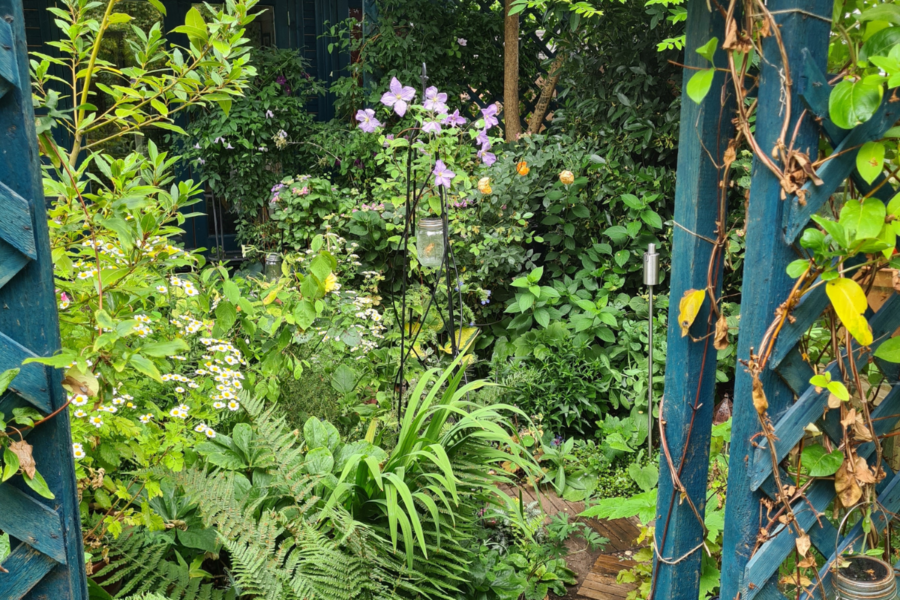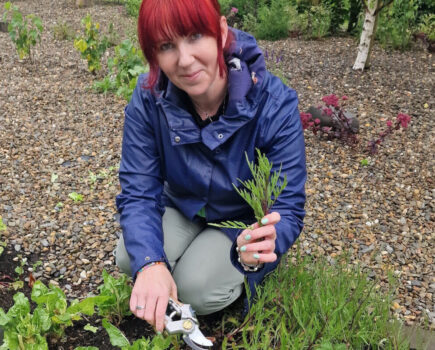Seek woodland inspiration for your small shady garden, writes Chris Collins, Garden Organic’s head of organic horticulture
Small gardens can often suffer from problems with shade, particularly if they’re in an urban area. Overhanging trees, fences, outbuildings and neighbouring houses can all bring shelter and shadow. But as an organic gardener, my mantra is to work with what you’ve got!
Many plants tolerate shade, and you may be pleasantly surprised by the results. Shady gardens have many benefits, providing cover for wildlife, retaining moisture, offering privacy and, due to the limited colour palette, a sense of calm.
My first tip is to visit woodland gardens in your area so you can see what grows well, then try to work out what kind of shade you’re working with. Partial or dappled shade with diffused light lets you choose from a wide selection of plants but even with deep shade, you can embrace leaf shapes and textures to create a mystical, other-worldly feel.
Planting in shade

March is a great time to start planting, and I like to plant in tiers. This means there’ll be a central, shade-loving shrub underplanted with groundcover and some trailing plants at the edges.

An example for deep and dappled shade is hydrangea, viburnum, skimmia, camelia or fatsia underplanted with hosta, dryopteris, adiantum and pulmonaria. Trailing plants, or those that cascade such as lysimachia and heuchera, can soften a pot edge. I’ll also add height with clematis, climbing hydrangea and ivy, and edge the area with bulbs of bluebell, wood anemone, chionodoxa and eranthis.

Our friends the snails will like the damp conditions so avoid piling bricks or pots together where they can hide. Encourage plenty of predators with evergreen shrubs or climbers. Yew, hornbeam or something exotic like Japanese maple are happy in shade and provide food and shelter for wildlife. And don’t forget to cut a ‘hedgehog highway’ in your fence.

Question and Answer
Q. Can I have colourful flowers in a shady area?
A. Shade doesn’t have to mean no colour. Planting in raised beds or containers allows you to have more control over the soil and bring the plants up to the light. Impatiens, begonias or coleus work well in baskets.
Q. Are there any vegetables that I can grow in shade?
A. Leafy greens such as chard, lettuce and spinach, and herbs such as parsley and mint, tolerate light shade, and in fact are less likely to bolt when conditions are moist.
Q. Can I grow pollinator-friendly plants in shade?
A. Yes, honeysuckle, ligularia, pulmonaria, astrantia, perennial geraniums and hellebores are all fantastic for insects.
Find more tips, advice and articles like this at the Amateur Gardening website. Subscribe to Amateur Gardening magazine now.





